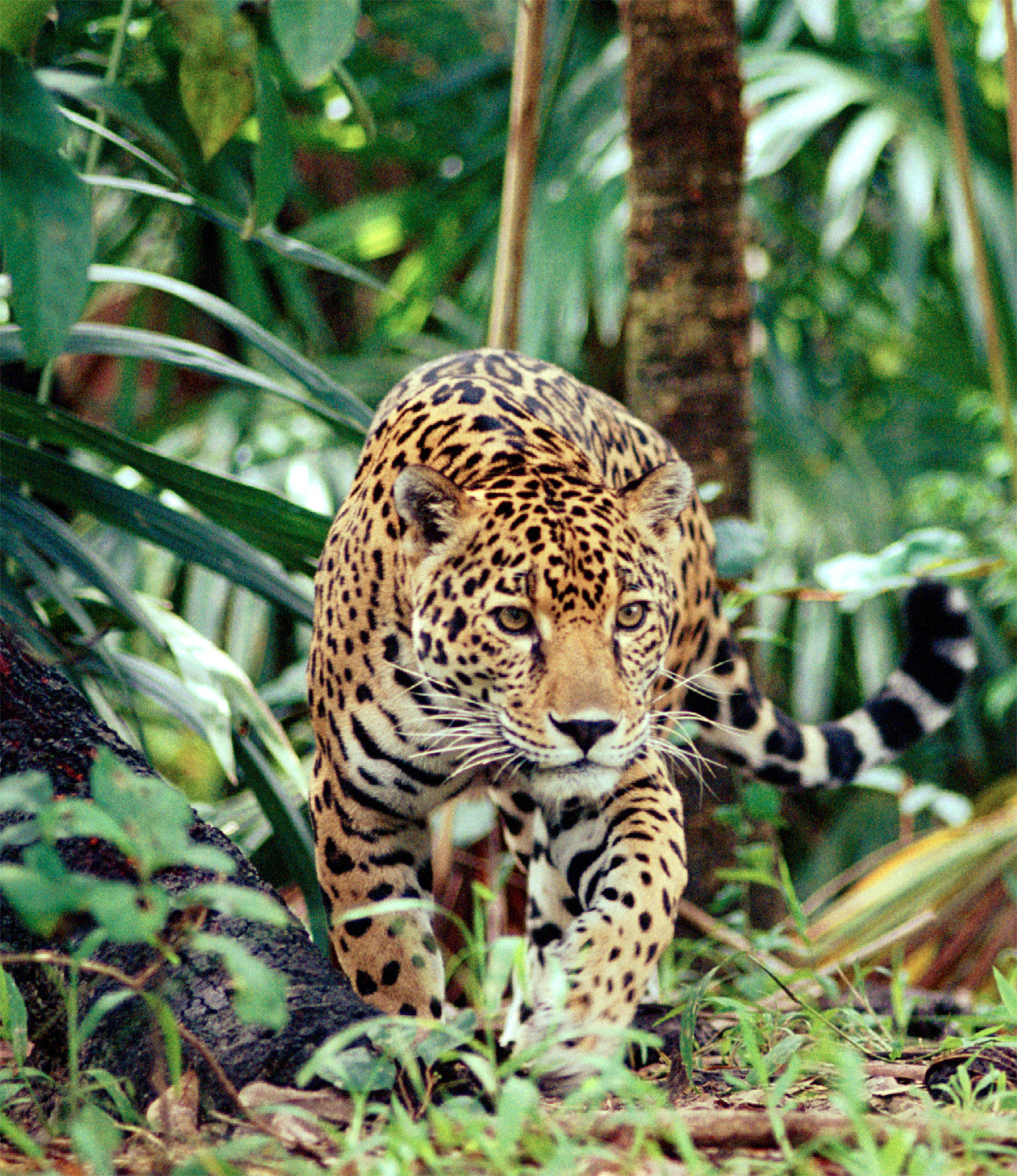FIELD GUIDE Animal Directory
jaguar
The largest land predator and the only Panthera species in Central America, the elusive jaguar resembles the African leopard, but it is stockier and more powerful. Although this cat can climb trees, it mostly prowls the dense forest floor. Adult jaguars require a vast range for hunting. Habitat fragmentation and illegal hunting have caused a decline in numbers, and today the jaguar is confined to a few protected areas, notably Corcovado, where fewer than 50 individuals remain.
FIELD GUIDE Animal Directory

Family and Breeding
Like all American cats, the jaguar is a loner. Each adult carves out a large territory for itself, marking it with scent trails. Females’ home ranges may overlap, but individuals avoid each other and chance meetings trigger an aggressive reaction. Males, whose territories cover 2–3 times the area of females, defend their turf against intrusions by other males, although actual fights between rivals are rare. Male and female adults generally meet only to mate, an ill-tempered affair that can occur at any time of year. Females then provide all the parenting. Cubs can stay with their mother for up to two years before leaving to establish their own territory. Females are fiercely protective of their cubs, against external predators, but also against male jaguars, which often kill existing cubs when taking over a rival’s territory.
Feeding
Jaguars are solitary nocturnal hunters who rely on stealth rather than speed to ambush prey. They eat a wide variety of animals, from agoutis to caimans, but prefer large ungulates such as tapirs and brocket deer. Jaguars that inhabit coastal terrain are also known to hunt marine turtles. Uniquely, they kill their prey with a bite to the skull using their huge canines. The jaguar’s bite is by far the strongest of all felids – twice as powerful as that of a lion.
Communication and Voice
Fearsome and furtive, adult jaguars rely on silence and guile to catch their prey and are thus not given to extensive articulation. When females come into estrus (heat), they communicate their fertility by marking territory with urinary scents and by vocalizations, ranging from purrs, mews, and grunts to the jaguar’s characteristic hoarse, cough-like roar. Males emit a series of deeper roars, repeated several times, to advertise their presence to females and to warn off rivals. Clashes between males elicit much snarling and hissing.
Did You Know?
Jaguars’ canine teeth are strong enough to pierce even the shells of a mature turtle.
FIELD GUIDE Animal Directory
KEY FACTS
Species
Panthera onca. Local name: Tigre.
Size
Height: 26–30 in (65–75 cm); Weight: up to 350 lb (160 kg).
Population in Costa Rica
Unknown.
Conservation Status
NT.
Reproduction
Females reach sexual maturity at two years; litters of one to four cubs every 18–24 months.
Habitat
From dry deciduous forest to seasonally flooded wetlands and lowland rainforest.
Seen
Corcovado, Santa Rosa, Talamancas, Tortuguero.
